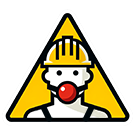Watersports
| Health risk | |
|---|---|
| Legal risk |
Watersports is a form of sexual activity that involves urine. It can encompass a wide range of practices including, but not limited to, urinating in front of a partner, on a partner, being urinated on, or drinking urine.
Background
Watersports for many has a sexual appeal which may link to the taboo of piss as a fetish, and many find the act itself sensual and sexual. Some fetish clubs have dedicated areas for piss play, but you should not do piss play outside of those areas (someone has to clean it up!). London has a dedicated watersports event called Streams of Pleasure. Lab in Berlin has a dedicated piss area.
Appeal
The appeal of watersports can vary greatly among participants; for some, it's the taboo or the breaking of societal norms that provides excitement, while for others, it might be about the sensation, the intimacy of sharing something so personal, or the power dynamics involved.
Methods
Watersports commonly involves being pissed on, either naked, clothed or while wearing fetish gear such as rubber or leather. This may or may not be washed after depending on your preference for piss, but it may affect the longevity of gear if unwashed.
It can also involve being pissed in, both the mouth and the ass. When pissing into an ass a hollow plug may be used to make it easier to piss into the bottom.
Pissing in the mouth may or may not involve swallowing or drinking, hoods and/or gags may be used to aid/encourage/force the sub to drink.
Some watersports play involves catheters, which is a subject in it's own right. When using catheters sterile procedure should be followed to reduce the risk of infection, catheters must not be reused or shared.
Omorashi
This subculture involves arousal from the idea or feeling of having a full bladder and potentially wetting one's self.[1]
Risks
STIs
Hepatitis A and B may be transmissible through urine.
Drugs
Not all drugs are metabolised by the body and some prescription and illegal drugs and remain in urine and if drunk affect the person consuming. If your playmate is on medication and you plan to drink, check with them what they take and any potential effects and side effects on you. It may well be safer not to drink their urine. Similarly, with illegal drugs especially amphetamines (such as mkat or crystal methamphetamine) which are not metabolised by the body. This can particularly pose a risk where engaging in chemsex or in club/party scenarios where you may not be aware that people have taken drugs.
Common drugs that are not fully metabolized by the body and remain in urine include:
- Amphetamines (including most ADHD medications, mephedrone, methamphetamine, and MDMA)
- Cetirizine (Zyrtec)
- Ketamine
- Psilocybin and psilocin (compounds found in magic mushrooms)[2]
Choking
There is a risk of a choking hazard if the sub is drinking piss, particularly if wearing a hood that transfers piss into a gag in the subs throat, e.g. funnel hoods. Subs may need to get used to hoods before drinking, and to build up the amount of piss they need to drink. Had signals may help communication with the Dom where piss gags make communication difficult. The Dom should be prepared and able to get the sub out of a hood quickly if required.
Risk mitigation
When using hoods to encourage/force piss drinking, ensure the sub can communicate if they need out of the hood quickly and the Dom can release them from the hood swiftly and without panicking and provide and support or first aid that the sub needs if choking.
If the sub is choking on liquid, you can hit them firmly on the back between the shoulder blades with the heel of your hand.
If you suspect yourself or a playmate has unknowingly or unintentionally consumed piss that contains unknown drugs, seek medical assistance immediately.
Known incidents
Medical case reports
RACKWiki incident reports
References
- ↑ "Omorashi", Wikipedia, 2024-10-07, retrieved 2024-11-05
- ↑ Dinis-Oliveira, Ricardo Jorge (2017-01-31). "Metabolism of psilocybin and psilocin: clinical and forensic toxicological relevance". Drug Metabolism Reviews. 49 (1): 84–91. doi:10.1080/03602532.2016.1278228. ISSN 1097-9883. PMID 28074670.
